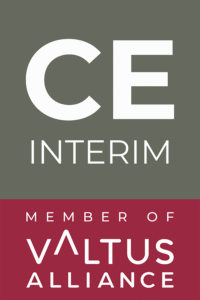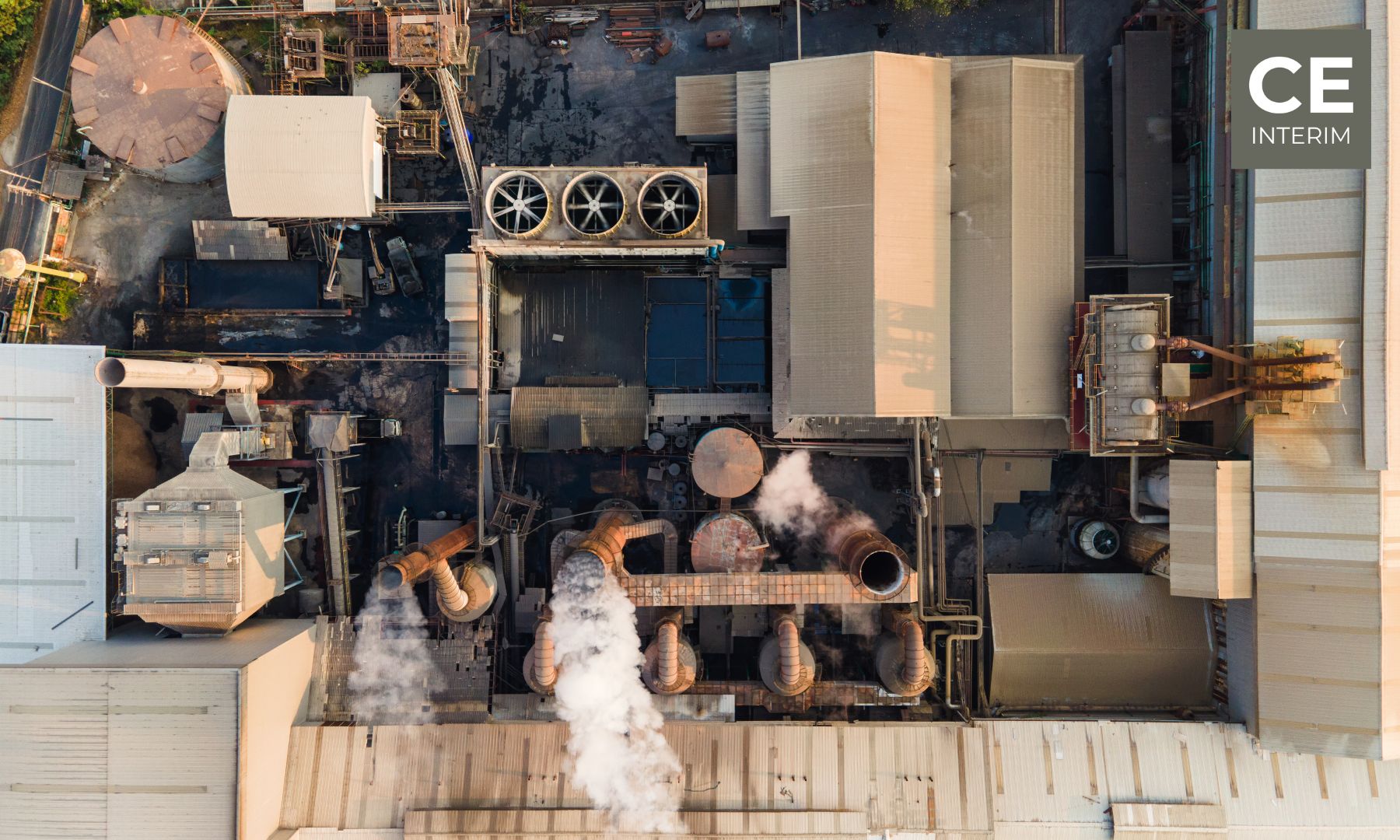Nimate dovolj časa, da bi prebrali celoten članek? Poslušajte povzetek v 2 minutah.
Nad nemško industrijsko pokrajino se zgrinjajo temni oblaki deindustrializacije, ki so nastali zaradi naraščajočih stroškov poslovanja, energetske krize in zakonodajnih pritiskov. Ti ogrožajo dobičkonosnost in vrednost za delničarje, medtem ko se podjetja borijo za sonce rasti.
Če ste lastnik podjetja v Nemčiji, lahko alternativne strategije, kot sta zunanje izvajanje in selitev tovarn v Srednjo in Vzhodno Evropo (SVE), predstavljajo prepotrebno zavetje. Ponujajo možnosti za zmanjšanje stroškov, varujejo operativno učinkovitost in ohranjajo globalno konkurenčnost. Vendar je težko izbrati eno od njih.
V tem poglobljenem vodniku bomo primerjali obe strategiji, da bi razumeli, katera bolje zmanjšuje tveganja deindustrializacije in varuje vrednost za delničarje. Potopimo se!
Katera so glavna tveganja deindustrializacije?
Deindustrializacija se nanaša na pojav, ko se industrijska dejavnost in zaposlovanje v državi zmanjšujeta ali ukinjata, zlasti v predelovalni in težki industriji. Nemčija je bila glavna žrtev tega strašnega trenda zaradi več dejavnikov.
V Nemčiji deindustrializacijo zaznamuje več tveganj, ki škodujejo industrijskim podjetjem:
Naraščajoči stroški energije: Energetsko intenzivni sektorji, kot je proizvodnja, se soočajo z nevzdržnimi cenami električne energije in plina. Leta 2023 so bili nemški industrijski stroški energije med najvišjimi v Evropi, saj so se v zadnjih dveh letih povečali za 45%, navaja Eurostat.
Operativna neučinkovitost: Strogi predpisi skupaj z motnjami v dobavni verigi in pomanjkanjem delovne sile ter upadanjem delovne morale prispevajo k manjši učinkovitosti in konkurenčnosti poslovanja.
Zmanjševanje produktivnosti: Nemška podjetja so že dolgo znana po visokih standardih produktivnosti. Vendar pa je nedavna sprememba okolja to močno ovirala.
Če se vaše podjetje sooča s podobnimi težavami, morate pravočasno sprejeti taktične ukrepe.
Vpliv tveganj deindustrializacije na vrednost delničarjev
Tveganja, povezana z naraščajočo deindustrializacijo, zmanjšujejo vrednost delničarjev in povzročajo škodo nemškim podjetjem. Naraščajoči stroški uničujejo marže, zaradi česar je zelo težko ohraniti dobičkonosnost.
Zaradi tega je zaupanje vlagateljev manjše, podjetja pa se trudijo pridobiti kapital in iščejo nove naložbene priložnosti. Če se razmere ne obravnavajo takoj, lahko povzročijo dolgoročno škodo in nakazujejo verjeten konec podjetij. Tudi največji igralci so zaskrbljeni.
Primerjava zunanjega izvajanja in selitve tovarn v Srednjo in Vzhodno Evropo za zmanjšanje tveganj deindustrializacije
Podjetja morajo hitro izvajati strategije za zmanjšanje tveganj, povezanih z deindustrializacijo. Selitev tovarne v Srednjo in Vzhodno Evropo in zunanje izvajanje sta se izkazali za dve optimalni rešitvi. Vendar morate izbrati najbolj idealen pristop za svoje podjetje.
Pomagali vam bomo izbrati, kateri načrt je za vas boljši:
Nadzor kakovosti in optimizacija procesov
Oddajanje v zunanje izvajanje: Čeprav se zunanje izvajanje na oddaljenih lokacijah, kot sta Azija ali Južna Amerika, morda zdi stroškovno učinkovito, pogosto pomeni manjši nadzor nad kakovostjo. Po podatkih KPMG 41% podjetij se sooča s težavami s kakovostjo pri dejavnostih, oddanih v zunanje izvajanje.
Premestitev CEE: Po drugi strani pa selitev tovarn v države srednje in vzhodne Evrope podjetjem omogoča, da ohranijo večji nadzor nad proizvodnjo. Velika bližina te regije Nemčiji in ustrezna uskladitev s standardi kakovosti EU zagotavljata zanesljivo zagotavljanje kakovosti.
Podjetja na Poljskem in Madžarskem imajo na primer koristi od visokokvalificirane delovne sile s strokovnim znanjem na področju proizvodnje, kar zagotavlja ohranjanje kakovosti po konkurenčnih cenah.
Zmagovalec: Selitev v Srednjo in Vzhodno Evropo omogoča boljšo optimizacijo procesa in nadzor kakovosti.
Varnost podatkov in intelektualna lastnina
Oddajanje v zunanje izvajanje: V številnih nizkocenovnih destinacijah za zunanje izvajanje je pravna zaščita intelektualne lastnine in varnosti podatkov šibkejša, zato so nemška podjetja izpostavljena kraji intelektualne lastnine. A McKinsey študija je pokazala, da se 22% podjetij, ki se odločajo za zunanje izvajanje v regijah zunaj EU, sooča z velikimi težavami glede varnosti podatkov, kar ni presenetljivo.
Premestitev CEE: Če se podjetja preselijo v države srednje in vzhodne Evrope znotraj EU, imajo koristi od strogih predpisov o varstvu podatkov v skladu z GDPR saj okvir varuje intelektualno lastnino in lastniške informacije - zmanjšuje tveganja in prinaša koristi.
Zmagovalec: Selitev v Srednjo in Vzhodno Evropozaradi strogih zakonov o varnosti intelektualne lastnine in varstvu podatkov.
Komunikacija in usklajevanje
Oddajanje v zunanje izvajanje: Upravljanje dejavnosti na oddaljenih lokacijah je težko. Komunikacijske vrzeli še povečajo vaše težave. Tem se ne morete izogniti, saj imajo regije zunanjega izvajanja različne jezike, kulture in časovne pasove.
Glede na PwC poročilo, 30% podjetij naleti na zamude in nesporazume, ko oddajajo posle v oddaljene regije, kot so Kitajska, Indija in Filipini. To povzroča neučinkovitost, delničarji pa so nezadovoljni.
Premestitev CEE: Selitev tovarn v države srednje in vzhodne Evrope ta vprašanja zmanjšuje. Te države so Nemčiji kulturno in geografsko blizu. To zagotavlja nemoteno komunikacijo in usklajevanje. Jezikovne ovire so prav tako zmanjšane, razlike v časovnih pasovih pa zanemarljive, kar omogoča učinkovitejše sodelovanje.
Zmagovalec: Selitev v Srednjo in Vzhodno Evropozaradi kulturne usklajenosti in bližine.
Bližina trga in logistika
Oddajanje v zunanje izvajanje: Logistični izzivi so pogosti pri oddaljenih središčih zunanjega izvajanja, kot je Azija. Naveličani boste dolgega časa pošiljanja, višjih stroškov prevoza in zapletenih carinskih postopkov. Zaradi tega nemška podjetja težje pravočasno izpolnijo zahteve evropskih strank.
Premestitev CEE: Države srednje in vzhodne Evrope se nemoteno vključujejo v evropsko dobavno verigo. Na spletni strani Eurostat Poročilo je tudi poudarilo, da so stroški prevoza iz držav srednje in vzhodne Evrope 30-40% nižje kot v Aziji. Če so dobavni roki krajši, se lahko vaše podjetje hitro odzove na zahteve trga.
Zmagovalec: Selitev v Srednjo in Vzhodno Evropozaradi bližine in nižjih logističnih stroškov.
Priložnosti za stroškovno učinkovitost in inovacije
Oddajanje v zunanje izvajanje: Zunanje izvajanje dejavnosti pri prodajalcih v Aziji ali Južni Ameriki zagotavlja kratkoročne možnosti za zmanjšanje stroškov. Vendar pa tveganja, kot so slaba kakovost izdelkov, zamude pri dobavi in ranljivost intelektualne lastnine, močno odtehtajo. Zato v prihodnosti ni možnosti za rast.
Premestitev CEE: Medtem ko so stroški dela v državah srednje in vzhodne Evrope 40-60% nižji kot v Nemčiji (Svetovni gospodarski forum), se te države ponašajo tudi s tehnično usposobljeno delovno silo. To podjetjem omogoča, da spodbujajo inovacije, ne da bi pri tem žrtvovala stroškovno učinkovitost. Ker lahko dostopate do visokokvalificiranega nabora talentov po nominalnih plačah, je to dolgoročna rešitev za rast vrednosti za delničarje.
Zmagovalec: Selitev v Srednjo in Vzhodno Evropo zagotavlja prihranke pri stroških in dolgoročne možnosti za inovacije.
Infrastruktura in delovna sila
Oddajanje v zunanje izvajanje: Destinacije zunanjega izvajanja, kot je jugovzhodna Azija, lahko ponujajo konkurenčne plače, vendar je infrastruktura v primerjavi z Evropo pogosto slabo razvita. Če je prometno omrežje slabo, se ni mogoče izogniti operativnim zamudam in neučinkovitosti.
Premestitev CEE: Države, kot so Poljska, Madžarska in Češka, so veliko vlagale v industrijsko infrastrukturo. Po podatkih Svetovna banka, je Poljska med 25 najbolj učinkovitimi državami na svetu na področju logistike, kar zagotavlja nemoten pretok blaga in virov. Z dobro razvito infrastrukturo in izjemno usposobljeno delovno silo je postala idealna destinacija za nemške proizvajalce.
Zmagovalec: Selitev v Srednjo in Vzhodno Evropo, zaradi napredne infrastrukture in usposabljanja delovne sile.
Predpisi in skladnost
Oddajanje v zunanje izvajanje: Zunanje izvajanje v regijah zunaj EU Evropska unija (EU) lahko kratkoročno prihrani stroške, vendar otežuje krmarjenje po regulativnih okoljih. Lahko se soočite s težavami s skladnostjo in pravnimi tveganji. Delovni, okoljski in varnostni standardi so tam šibkejši. Zaščita podjetja pred morebitnimi kaznimi in škodljivim vplivom na ugled je težja.
Premestitev CEE: Ko se preselite v katero koli od držav Srednje in Vzhodne Evrope, morate upoštevati enake predpise EU kot v Nemčiji. To vključuje delovne, okoljske in varnostne standarde, kar zagotavlja, da nemška podjetja ohranjajo pozitiven ugled, hkrati pa se izogibajo pravnim tveganjem.
Zmagovalec: Selitev v Srednjo in Vzhodno Evropo, zagotavlja dobro usklajenost z zakonodajo in skladnost z njo.
Končna sodba
Selitev tovarn v države srednje in vzhodne Evrope je jasna zmagovalka te bitke. Zunanje izvajanje je lahko kratkoročen pristop, vendar dolgoročno predstavlja kritično tveganje. Selitev v države srednje in vzhodne Evrope je celovitejša rešitev, ki podjetjem omogoča, da preverijo vse možnosti za ohranitev konkurenčnosti.
Omogoča ohranjanje kakovosti, boljši nadzor in večjo učinkovitost, hkrati pa preprečuje nesporazume, težave s skladnostjo in motnje v dobavni verigi. To je najbolj optimalna strategija za nemška podjetja, ki jih skrbijo tveganja deindustrializacije in ohranjanje vrednosti za delničarje.
Se vaše podjetje spopada s tveganji deindustrializacije? Spoznajte, kako lahko selitev tovarne v Srednji in Vzhodni Evropi zaščiti vrednost delničarjev in zagotovi trajnostno rast. Ne veste, kako se lotiti perečih izzivov vaše organizacije? Družba CE Interim kot zaupanja vreden član združenja Valtus Alliance ponuja vrhunske rešitve začasnega upravljanja, ki bodo vašemu podjetju pomagale pri premestitvah tovarn, doseganju operativne odličnosti in optimizaciji dobavnih verig. Naše globalno strokovno znanje in izkušnje zagotavljajo, da so prehodi vašega podjetja nemoteni in uspešni, saj lahko posredujemo kjer koli in kadar koli je to potrebno. Začnimo!





